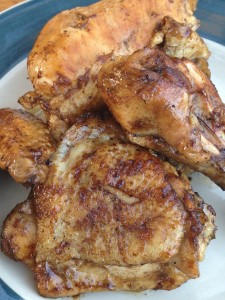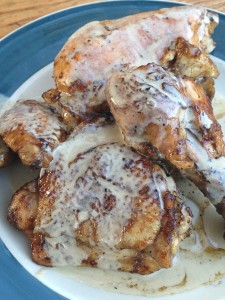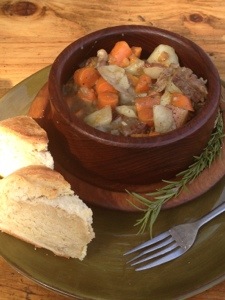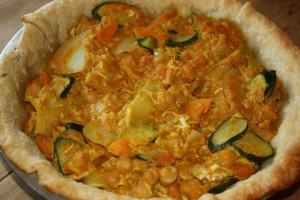
When the crops were ready for harvesting, communities would come together as a community to help reap the crops and celebrate their bounty. Vegetables were plentiful and they readily became part of the feast. Similar to the American Thanksgiving, these feasts celebrated the family, the community, and the harvest.
Feasts were different for economic classes: noble’s feasts included venison, pheasant, and other wild game while the other classes enjoyed wild hare, fresh fish, and forged items like wild mushrooms, berries, and other scavenged delicacies. Recipes were created that used the harvested items and often included items that weren’t normally available, but were saved for special occasions.
The recipe below is one such recipe – vegetable pie. The filling used items that were readily found during harvest time. This particular dish may be served as a main course, an alternative to a meat option, or served as a side dish. The provided pastry crust recipe is a standard and has been used by my family for generations. Although people will often create shortcuts to any recipe and store bought pie crust and heat-and-serve soups can be used. However, the recipe I am providing has no shortcuts.
Pie Crust
2 1/2 cups all-purpose flour, plus extra for rolling
1 cup (2 sticks or 8 ounces) unsalted butter, semi soft and cut into cubes
1 tsp salt
6 to 8 tbsp ice water
Combine flour, salt, and sugar together and mix thoroughly. Add butter and crush into the flour mixture with a fork until it resembles coarse meal, with pea size pieces of butter. Add ice water a tablespoon at a time, blending until mixture just begins to clump together. Don’t add too much water as it will make the crust tough.
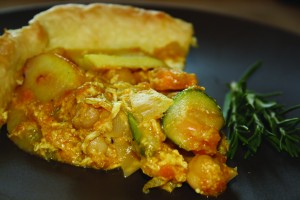
Place the dough on a clean surface such as a cutting board. Press down on the dough a few times to help flatten the dough between the layers of flour which will help make the crust flaky. Shape the dough mixture into two parts. Sprinkle a little flour around the mounds of dough and wrap each disk in wax paper and refrigerate at least 1 hour, and up to 2 days to cure the dough.
Remove the crust from the refrigerator. Let sit at room temperature for 5-10 minutes in order to soften enough to roll out the dough with a rolling pin on a lightly floured surface to a 12-inch circle and about 1/8 of an inch thick. Carefully place each dough segment into two 9-inch pie plates (one in each). Gently press the pie dough down so that it lines the bottom and sides of the pie plate. Pre-bake the dough at 375 degree until it is half baked.
Vegetable Pie
2 cups vegetable stock
3 large carrots, julienned
3 cloves of garlic, minced
1 medium sweet potato, peeled and julienned
1 leek, diced
4 medium red potatoes, thinly cut and then julienned
2 eggs, scrambled (for vegans use 2 tbsp of corn starch or powdered arrowroot instead)
1 can of garbanzo beans/chickpeas, drained and rinsed
4 tbsp olive oil
1/2 tsp cinnamon
1/8 tsp fresh ginger, minced (optional)
1/8 tsp powdered clove
Sauté the vegetables (carrots, garlic, leeks, sweet potatoes, and potatoes) in olive oil. When leeks are transparent, add chickpeas and 2 cups of soup or broth and continue to simmer. When carrots and potatoes are tender, slowly add eggs to thicken pie filling. If eggs are not desired, gradually add corn starch or arrowroot to thicken.
Add pie mixture to crust and continue to bake for 10 minutes until pie crust is golden brown. Let cool for 5 minutes before serving.

